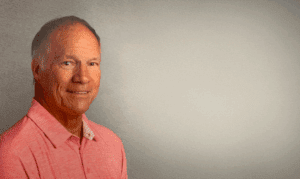Obamacare’s state-level health insurance exchanges are set to sign people up in October. But with the federal government on the hook to run 27 of them by itself — and another seven in partnership with states — it’s increasingly likely that they’ll open for enrollment after the official Oct. 1 start date.
The exchanges face more than technical difficulties. People won’t even know what to do when the marketplaces open. Forty-three percent of the uninsured are unaware that they must get coverage under the law.
The Administration is trying to enlist celebrities including Alicia Keys, Oprah Winfrey, and Amy Poehler to promote the law. Meanwhile, states are branding everything from coffee cups to porta-potties to publicize the exchanges.
But no amount of star power can spin the fact that Obamacare is driving insurance premiums up — way up.
In Nebraska, for instance, a healthy 30-year-old man making $35,000 could pay up to seven times more for coverage next year on the exchanges, according to data from the Government Accountability Office and calculations conducted by journalist Philip Klein.
A 30-year-old earning $25,000 a year could pay $1,142 for coverage next year — even after taking into account subsidies he’s eligible for under the law. That’s pricier than the cheapest 2013 rate in 45 states — and double in 19 states.
Another recent analysis found that rates for healthy, middle-aged consumers could double or even triple in the individual market.
The Ohio Department of Insurance forecasts premium hikes averaging 88 percent. Its counterpart in Indiana is estimating a 72-percent increase.
This “rate shock” shouldn’t be shocking to anyone who has been paying attention. Obamacare is chock-full of provisions that make health insurance more expensive.
First, Obamacare forces individuals to buy costlier policies. It essentially eliminates the low-premium, high-deductible catastrophic-coverage plans popular with the young and healthy. Instead, people who don’t have insurance through their employers will have to turn to the exchanges, which offer four tiers of coverage: platinum, gold, silver, and bronze, in descending order of generosity.
The problem is that even bronze plans have to offer comprehensive benefits. Obamacare requires all policies to cover a minimum set of “essential health benefits” — including contraceptives, maternity care, counseling, physical therapy, and preventive services — regardless of whether patients want or need them.
The more items deemed “essential,” the higher the price tag. The Congressional Budget Office expects average premiums to rise 27 to 30 percent by 2016 because of these requirements.
Two additional regulations will drive premiums for most folks even higher. Guaranteed issue requires insurers to sell policies to all comers, regardless of their health status. Community rating, meanwhile, restricts insurers’ ability to adjust premiums based on applicants’ expected costs. Premiums for smokers can be no more than 1.5 times those non-smokers pay, and older people cannot pay more than three times what younger ones do.
These regulations will lower costs for some people — but at the expense of everyone else. If insurers can’t charge older, sicker folks more, they’ll have to make up their losses by increasing premiums for the young and healthy.
For some of Obamacare’s supporters, this is a feature, not a bug. They believe it is okay to double or triple the insurance premiums of the healthy because the sick will benefit.
But they forget that convincing the young and healthy to buy insurance is crucial to the law’s success. If insurance in the exchanges is too expensive, then young people may decide to remain uninsured and pay the far cheaper penalty the law prescribes.
That will leave more costly, sicker, and older patients in the exchange pools, which will drive premiums up even more — and ultimately undermine the fiscal stability of the entire system.
According to a report from Bloomberg News, that’s just what will happen unless almost 40 percent of the seven million exchange customers the law envisions are young, healthy adults.
So nearly 3 million young, healthy Americans — who already go without coverage thanks in no small part to its cost — must choose next year to pay higher premiums than those currently available.
Obamacare’s supporters have their work cut out for them. After all, it’s not easy to market a law that will raise prices for most consumers. And no ad campaign can hide that fact.
[Sally C. Pipes is President, CEO, and Taube Fellow in Health Care Studies at the Pacific Research Institute. Her latest book is “The Cure for Obamacare” (Encounter 2013).]











Leave a Comment
You must be logged in to post a comment.